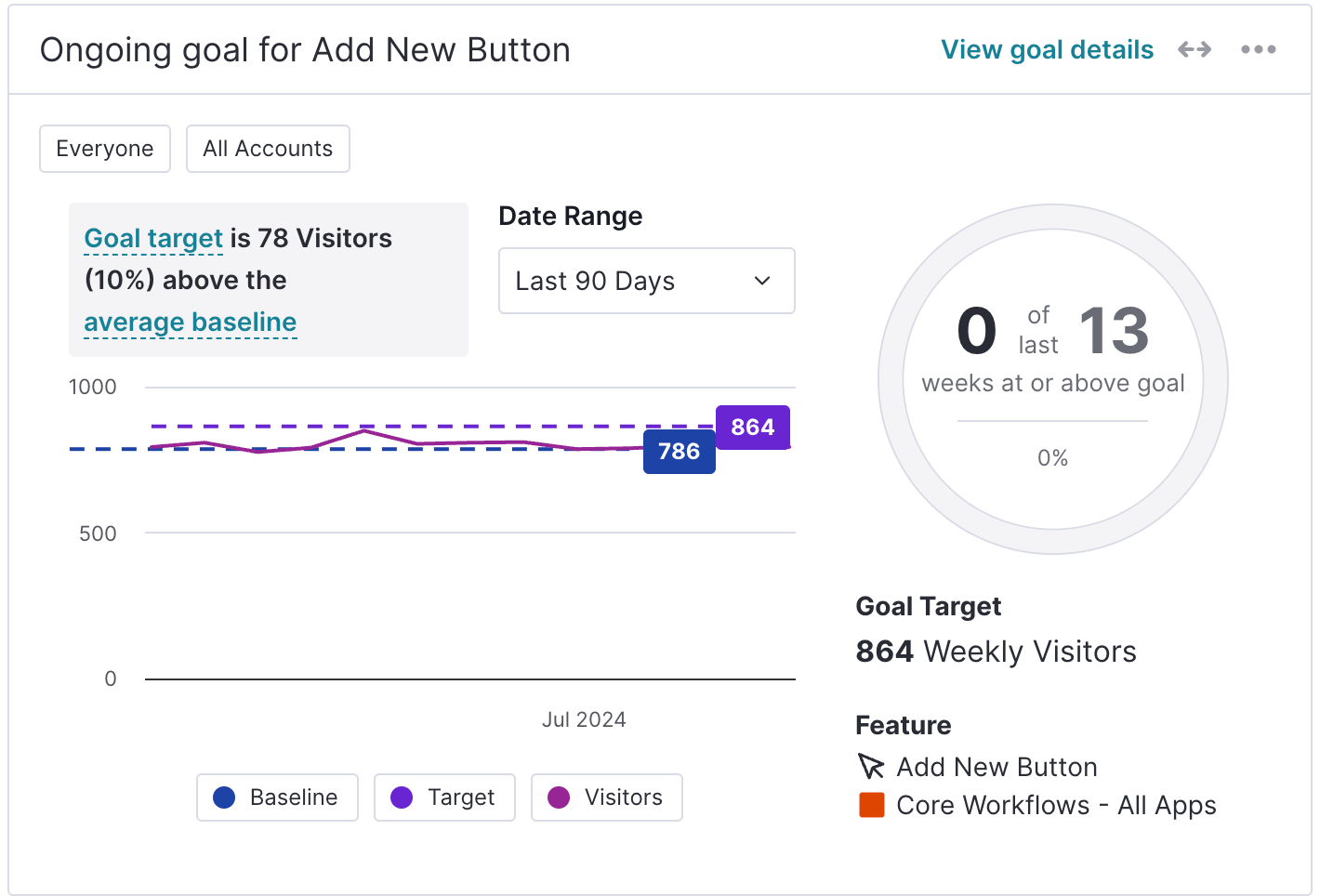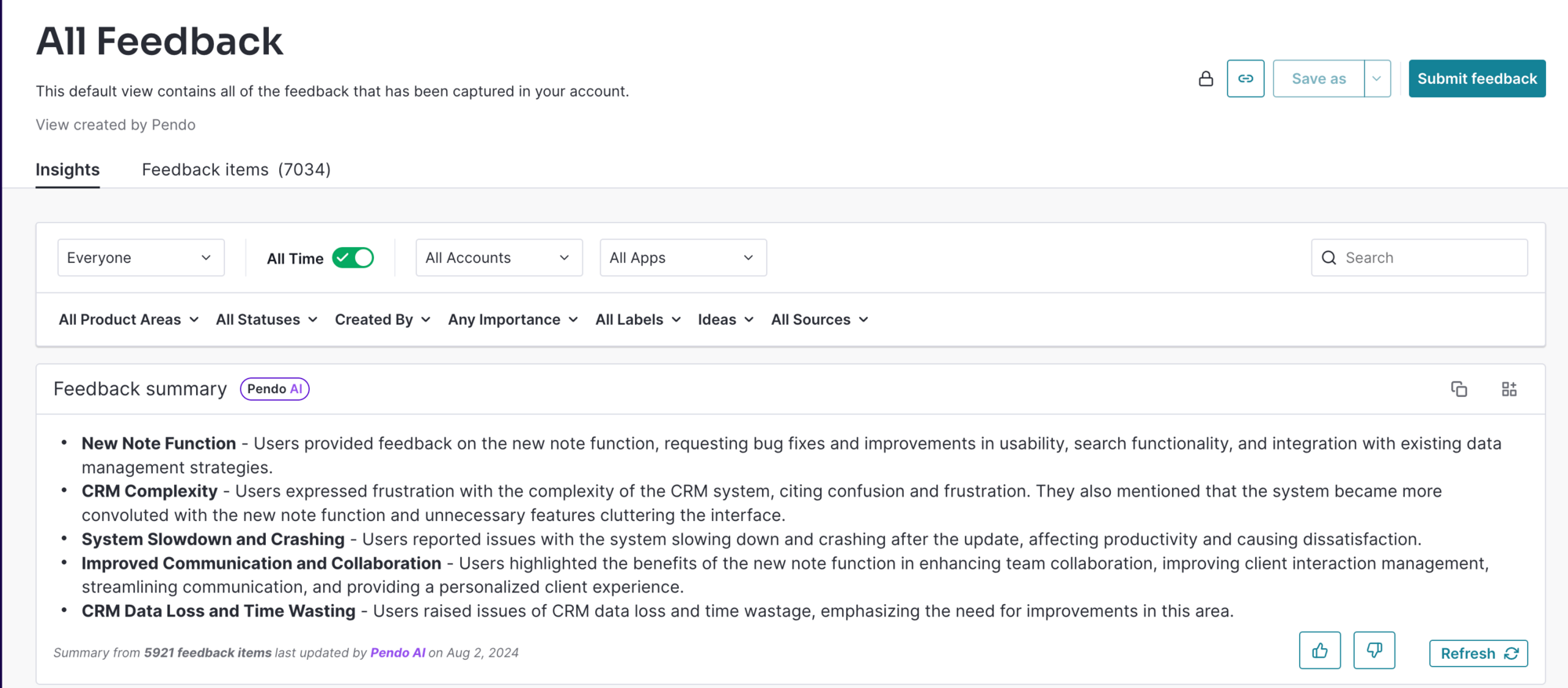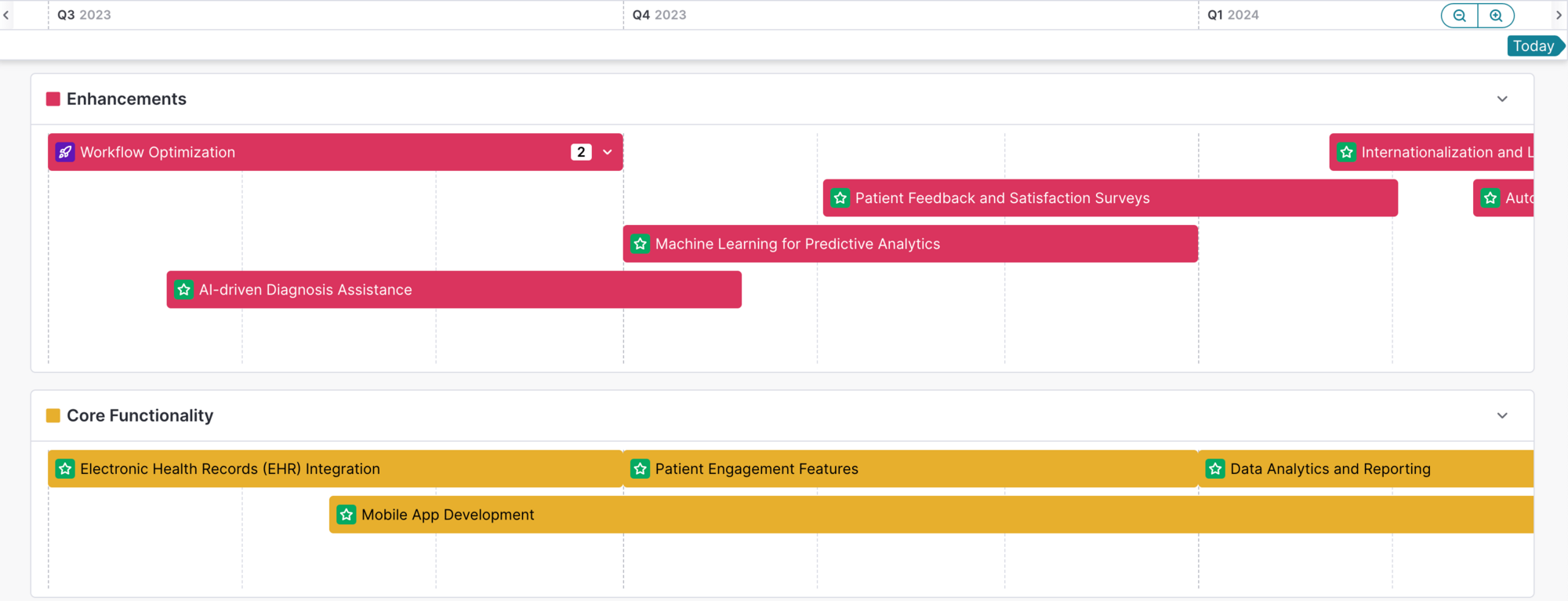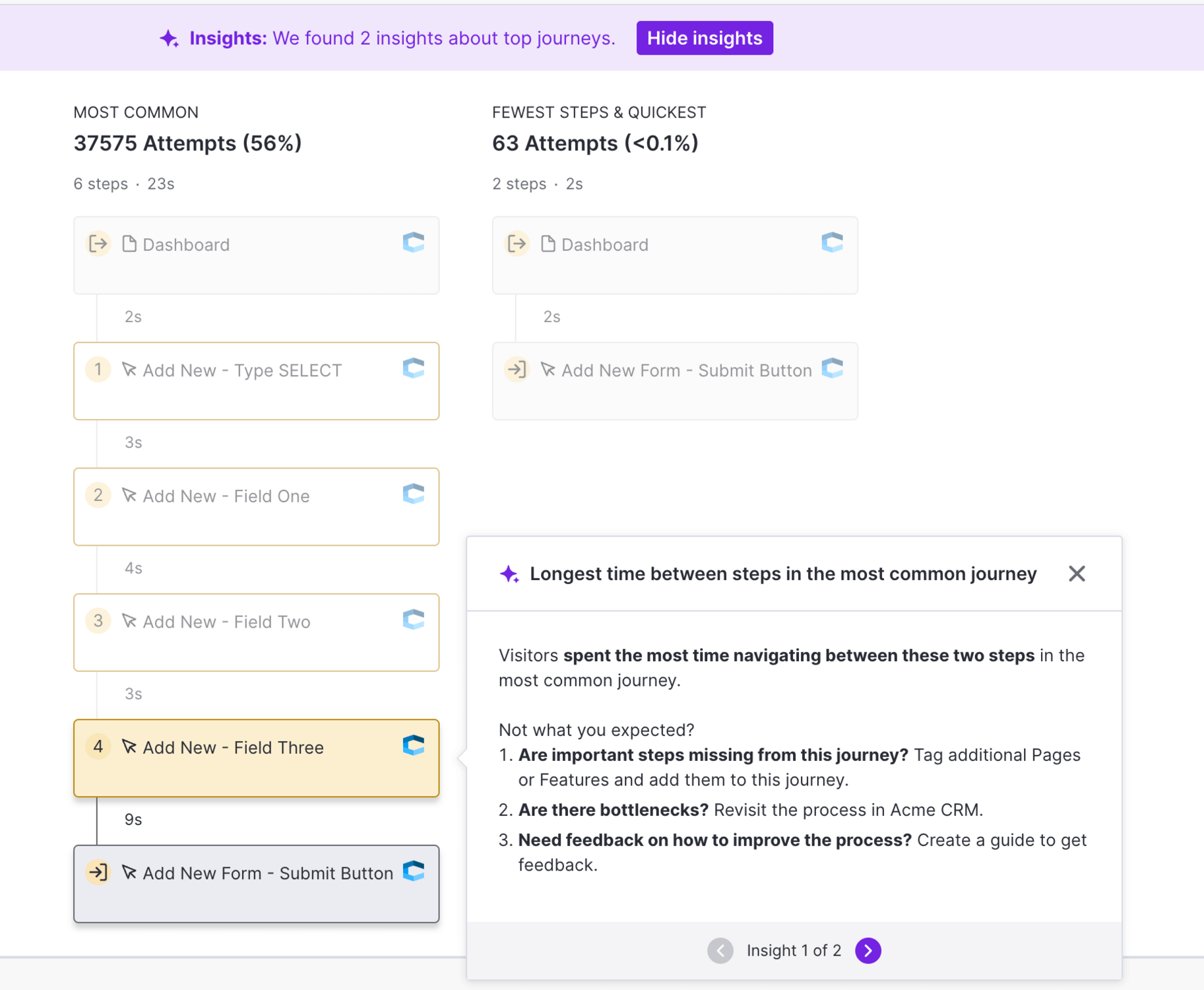In the rapidly evolving world of product management, AI is no longer just a buzzword—it’s a game-changer.
From staying informed about market trends to making better data-driven decisions, AI can significantly enhance every stage of the product development lifecycle. Whether you’re already leveraging AI in your daily work or starting to explore its potential, these five AI prompts will help you navigate your role more effectively—and ensure your product meets users’ needs.
1. Market and competitor analysis
This prompt helps product managers (PMs) gain a deeper understanding of the market environment and competitive landscape, enabling you to identify opportunities for differentiation and potential threats.
Here are three AI prompts to use for market and competitor analysis:
- “Provide an analysis of the current market trends and competitor landscape for [specific product or feature]. What are the key differentiators and potential gaps?”
- “List the top 5 competitors in the [industry/sector] that target [specific customer segment] and describe their market positioning, key features, pricing strategy, and unique selling propositions.”
- “Identify the key demographics for [new product] within the [geographical region/industry]. Provide insights into their preferences, pain points, purchasing behavior, and how well current market offerings meet their needs.”
From there, you can use product analytics to track user engagement with key features and compare it to industry benchmarks. By analyzing how users interact with your product compared to competitors, you’ll be able to uncover key insights to inform your strategic decisions.
See it in Pendo: Leverage Pendo Dashboard widgets to track user engagement and perform competitor comparisons. These tools provide visual insights into how your product stacks up against others in the market. You can use the Goals widget to set adoption goals for specific features, and monitor overall feature adoption with the Feature Adoption widget.
2. User feedback synthesis
AI tools can help product managers quickly synthesize qualitative user feedback, identify recurring themes, and generate actionable insights for product improvements.
Here is an AI prompt to use for user feedback synthesis: “Summarize the main insights and recurring themes from the latest user feedback and reviews for [specific product or feature]. How can we address these concerns in our next update?”
And here are some examples of data inputs to include with your prompt:
- “The onboarding process is confusing and needs better guidance.”
- “I love the new dashboard feature but wish it could integrate with other tools.”
- “The app crashes occasionally when I try to export reports.”
See it in Pendo: You can use Pendo to easily collect, categorize, and analyze user feedback. Pendo Listen automatically summarizes feedback and highlights the most common themes and pain points, which you can then see in AI-driven summaries.
3. Feature prioritization
This type of prompt aids PMs’ ability to make data-driven decisions about which features to prioritize, ensuring teams tackle the most impactful and strategically-aligned features first.
Here is an AI prompt to use for feature prioritization: “Based on the following list of features and enhancements, help prioritize them considering user impact, technical feasibility, and alignment with our business goals.”
And here are some examples of data inputs to include with your prompt:
- “Users frequently request an improved search functionality, with over 70% mentioning it in feedback surveys.”
- “Our primary goal for Q4 is to improve user retention by 15% by enhancing the core product experience.”
- “We have a development team of 10 engineers available for the next sprint, with a budget of $50,000 and a timeline of 8 weeks.”
See it in Pendo: Pendo Listen collects user feedback and measures ideas by votes, account value, or by plotting effort and impact on an x-y axis for data-driven prioritization.
4. Stakeholder communication
AI can help product managers craft clear, informative updates that align product progress with overall business strategy and ensure key stakeholders are kept in the loop.
Here is an AI prompt to use for stakeholder communication: “Draft a comprehensive update for stakeholders about the current status of the product development, including key achievements, upcoming milestones, and potential risks.”
And here are some examples of data inputs to include with your prompt:
- “We are launching a new software product aimed at small businesses, with a focus on improving their workflow automation. The project is currently in the development phase and is expected to launch in Q4.”
- “The CFO is primarily concerned with the budget and ROI, while the Head of Marketing is focused on the product’s go-to-market strategy and customer acquisition.”
- “We need to ensure that all stakeholders are aligned on the project timeline and budget, and that any concerns about resource allocation are addressed.”
See it in Pendo: Pendo Roadmaps are ideal for sharing product development status with stakeholders, allowing you to visually communicate progress and align roadmap items with strategic goals.
Additionally, you can create detailed reports and dashboards tailored to different stakeholder needs. Use visualizations to highlight key metrics such as user engagement, feature adoption, and feedback trends.
5. User persona refinement
This type of prompt assists PMs in refining user personas to ensure products meet the specific needs and preferences of different customer segments.
Here is an AI prompt to use for user persona refinement: “Create detailed personas for our target users based on the following data: [user demographics, behaviors, preferences]. Include pain points, goals, and how our product can uniquely address their needs.”
And here are some examples of data inputs to include with your prompt:
- “Refine the persona of a product manager who frequently uses data analytics tools, prefers Slack for communication, struggles with aligning cross-functional teams, and is a key decision-maker in purchasing software tools.”
- “Refine the persona of a product manager who values innovation, aims to streamline product development processes, is motivated by career growth, and is frustrated by inefficient workflows and lack of time for strategic thinking.”
- “Refine the persona of a product manager who logs into the product daily, primarily uses the analytics dashboard and roadmap planning tools, frequently seeks out new feature updates, and often provides feedback about the need for more customizable reporting options.”
Using product analytics to analyze how different segments interact with your product will also help you refine your personas and ensure the product addresses their unique pain points.
See it in Pendo: Pendo’s segmentation and user journey mapping tools—such as Paths, Funnels, and Workflows—offer scalable ways to understand user behavior and refine personas accordingly.
Combining AI and modern product management tools
Integrating AI into your product management process can significantly enhance your ability to understand user behavior, prioritize development efforts, communicate effectively with stakeholders, and, ultimately, create products that truly meet users’ needs.
If you’re already a Pendo user, take advantage of the AI analysis features to streamline your workflows and focus on what matters most: building products that users love.





![[object Object]](https://cdn.builder.io/api/v1/image/assets%2F6a96e08774184353b3aa88032e406411%2F39f3ccde352b460cbf348ccc952054cd?format=webp)


